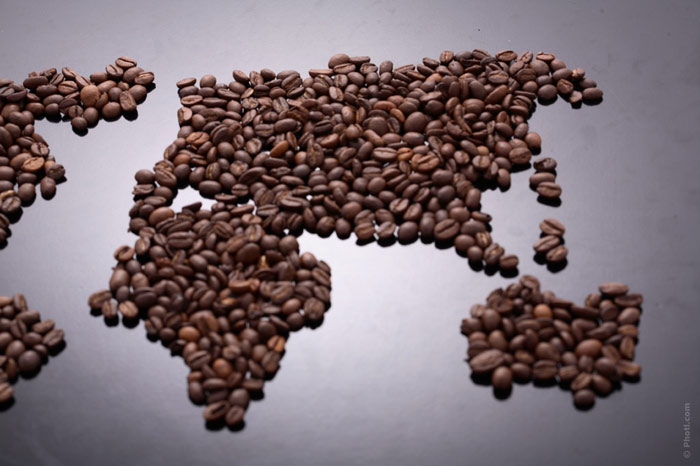We may think that we live in houses or cities, whereas the most correct fact is we live on the planet. We mind to maintain order in our houses and cities, but somehow it doesn’t follow we do the same for the planet. The truth is, we cannot be too aware of our environment – more often we wait for remainders to do something good for our spherical home floating through space.

We introduced recycling, but it doesn’t provide the perfect solution, and not all repurposed things can really be used for the new purpose. So, metals and minerals still have to be obtained from the Earth.
What’s more, recycling is subject to contamination like everything else. All those toxins and different smutch that were on the cans coming into recycling centers can go through the process and reappear in newly-made products. Consequently, the measures we are taking to make the Earth cleaner do not go very far. Check the following situations where we can aggravate the plunder and add to the slow destruction of the planet.
About the go organic trend
The idea to go organic sounds great and has won over numerous customers. Under the pretext of caring for the planet the manufacturers of organic food put up prices by 20 to 100% and rake in money. There is no definite evidence that organic food is really your best bet. So far no research showed significant difference between common-type food and organic one. Meanwhile, growing organic crops takes quite a lot of acreage, but most of the foods grown have a shorter shelf life, so you have to go to whole food stores to buy fresh supplies more often. The use of natural organic compounds as fertilizers is also of doubtful value. You can prefer your organic food, but as for helping the Earth by your preference, it’s a moot point.
About air polluting
We stopped noticing the condition of the air in big cities long ago, it’s become habitual. But actually what we breathe in contains too much traffic exhaust, dirt in tiny particles and different harmful emissions. Both hemispheres, from China to the U.S., know well what pea soup is: the thick smog is a scourge of many a city.
Air pollutants are conducive to developing lung cancer and respiratory diseases, so the US Environmental Protection Agency (EPA) made a list of insalubrious substances. The most well-known are carbon monoxide, benzene, asbestos, nitrogen oxides, methlyene chloride, volatile organic compounds, and some metals, mercury and cadmium for example.
These compounds are regularly emitted as the result of our daily routine activities – cars and trucks exhaust carbon monoxide, drying paints release VOCs, fires fill the air with a great amount of fine particles of soot and worse stuff.
About acid in the oceans
Air is dirty not only in big cities and industrial centers! Every day burning fossil fuels and likewise processes release 20 and more million tons of greenhouse gases that make the atmosphere contaminated with excessive carbon dioxide. Much of the CO2 gets dissolved in water and causes the formation of carbonic acid which in turn decreases the pH.
The lowering of pH is no small matter for marine dwellers, underwater plants and environment. Acidity levels go up endangering various marine species. It means unwelcome alterations in the existing food chain, eventually affecting every creature on the planet, mammals included.
About wood for chocolate
We love our chocolate bar shiny and smooth. Palm oil is the necessary ingredient for making it pleasantly glossy. All big companies producing chocolate use palm oil – the question is, where and how do they get it?
Large palm oil plantations are grown in Borneo where they replace the natural habitat of local fauna – elephants, orangutans and tigers, to name only the largest animals. If orangutans refuse to budge, business-minded plantation owners kill them. Thus, palm oil production is leading to large-scale extinction of orangutans, leaving only about 60 thousand of them in Borneo and Sumatra – ten times less than there used to be. If the situation doesn’t change in the next decade or two, the species will die out.
About birds killed by communication towers
Migrating birds’ ability to find their routes is something short of a marvel – scientists are yet to discover how they manage to map out the way. Nowadays this ability is greatly impaired by other routes – those of our phone calls.
Our phone calls and other everyday uses of smartphones and iPhones depend for their work on communication towers which cause disorientation in migrant birds. Winged creatures become muddled, strike cell towers and fly into cables. Some of them belong to rare species that are becoming extinct.
Communication structures kill up to 7 million winged migrants yearly, but there is yet more danger from wi-fi networks that emit radiation. The influence of radiation on birds is drastic: they lose their plumage, abandon nests and perish.
About noise pollution on water
We do not pollute the oceans with oil, garbage and other kinds of dirt only. Noise pollution has become a very serious kind of danger that threatens to kill whole species of marine life. Nowadays oceans are buzzing with human activity in the literal sense of the word. Fishing vessels, passenger ships, cargo ships emit too much noise. Many sea dwellers communicate by sonar, and their communication is adversely affected by human noises.
As marine animals’ calls and responses are being interfered with, they have to adapt to negative conditions. Whales, for example, spend much more energy than they used to to upkeep communication. They don’t hear responses well because their communication range has reduced dramatically – they can comfortably use only 10% of what was once their natural range. Activities like pile driving and underwater drilling make them stressed out and cause mass beaching that has been in evidence lately.
About turning out new gadgets
Within short periods of time tidal waves of updated gadgets flood the markets again and again, making us rush to get the newest model. Now where do outdated phones go? Much of the dumped stuff goes to the Third World to be recycled for what usable metals there are, like copper. Plastic parts are usually melted to reach metal pieces – in Ghana, for one, it causes serious air pollution.
But recycling doesn’t meet the demand for disposing of unwanted devices by far. Mining goes on devouring the Earth’s resources. A recent scandal involving mining coltan is a good example of repercussions of uncontrolled extraction – it served to aggravate the Ituri conflict and caused losses in the Eastern Mountain gorilla population.
About plastic
Sometimes it seems that we are living in the world of plastic. Wherever you turn you find plastic – most of which is intended to be thrown away. Is it any wonder that disposing of plastic is about one of the trickiest problems of our time?
In the pie chart of total human waste plastic has a 10% piece – and these 10% are very slow to disintegrate. For example, in L.A. plastic rubbish gets thrown away into the Pacific Ocean at the daily rate of 10 metric tons – known as the Great Pacific garbage patch spoiling the surface of the ocean.
In water plastic throwaway kills fish by million every year – either by causing fatal injuries or by catching sea animals tangled in the debris. On ground chlorinated plastic contaminates the soil with its injurious substances which find their way into ground waters making them impure and potentially harmful for animals and people.
About kitty litter
People got used to having kitties around so much that many of them no longer let the little cuties out. It is more comfortable this way: you feed them, prevent them from encountering outside dangers and engaging into fights and hunts, and there is kitty litter for them to dirty up when they need.
Cat litter is, again, extracted from the bowels of the Earth. It is made from clay that is obtained by strip mining. The annual outtake of clay comes up to two million tons and more sourced by this invasive type of mining which leaves vast ugly craters in the earth.
About medication residue affecting fauna
There is no reason why the pills we take shouldn’t produce the same effect on the surrounding animals and birds. They do.
When our medicine-charged urine passes out with the waste water, it gets into the soil around the pipes and subsequently into earthworms. As these earthworms fall prey to birds, the latter also receive residue of the drugs which is still efficacious.
Research revealed that when birds get exposed to Prozac they lose their appetite and progenitive abilities. The same effect is evident in fish that get exposed to imperfectly cleansed human waste water that carries elements of used drugs. It was discovered that exposure to estrogen causes male fish to generate eggs.
Here are ten daily activities that can affect the planet’s health. Hopefully you can find something you can change to give a break to our suffering Earth.










